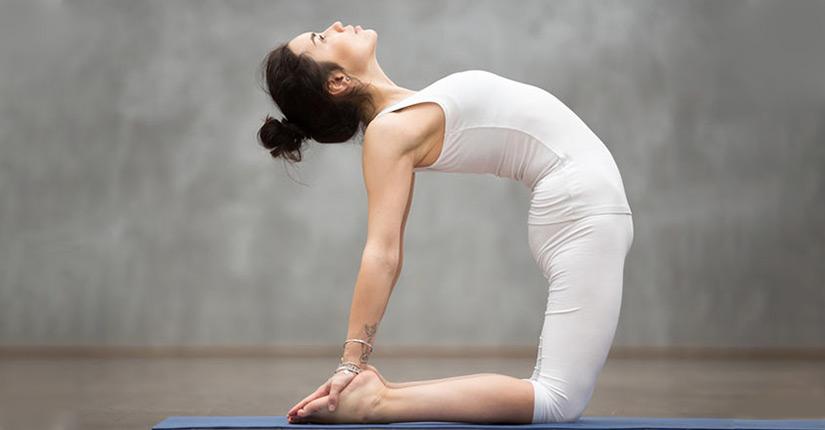
Power Yoga, also known as Vinyasa or Power Vinyasa Yoga, is a modern style of yoga that emerged in the 1990s. Developed by American yoga teachers seeking to make yoga more accessible and appealing to fitness enthusiasts, Power Yoga draws inspiration from Ashtanga Yoga but offers more flexibility and creativity in sequencing.
Unlike other traditional forms of yoga that emphasize stillness and holding poses for an extended period, Power Yoga focuses on continuous movement and a flowing sequence of postures. It combines dynamic, strength-building exercises with breath control and meditation techniques, creating a vigorous and energetic practice.
How To Do Power Yoga
Power Yoga is a dynamic and challenging form of yoga that combines flowing sequences, strength-building poses, and mindful breathing. Here’s a step-by-step guide on how to do Power Yoga:
1. Warm-up: Start with a brief warm-up to prepare your body for the practice. This can include gentle stretches, neck rolls, shoulder rotations, and a few rounds of Sun Salutations to awaken the body.
2. Set an Intention: Take a moment to set an intention for your practice. It could be anything from increasing strength and flexibility to finding inner peace and balance.
3. Sun Salutations: Begin with a few rounds of Sun Salutations (Surya Namaskar) to warm up the body and build heat. Sun Salutations involve a sequence of poses that flow together, typically including forward folds, lunges, and upward-facing dog.
4. Flowing Sequences: Power Yoga is characterized by continuous movement and flowing sequences. Move through a series of poses, linking them together with smooth transitions. Common sequences include warrior poses, standing balances, lunges, and twists. Maintain a steady breath throughout the practice, synchronizing it with your movements.
5. Strength-Building Poses: Incorporate poses that challenge and strengthen your muscles. Include standing poses like Chair Pose (Utkatasana), Warrior II (Virabhadrasana II), and balancing poses like Tree Pose (Vrikshasana) or Eagle Pose (Garudasana). Poses like Plank, Chaturanga Dandasana (Low Plank), and Boat Pose (Navasana) are also effective for building core strength.
6. Mindful Breathing: Pay attention to your breath throughout the practice. Practice Ujjayi breath, a deep and audible breath that helps calm the mind and generate internal heat. Inhale deeply through the nose, filling the lungs, and exhale slowly through the nose, making a soft “ha” sound.
7. Modifications and Rest: Power Yoga can be intense, so listen to your body and modify poses as needed. Take breaks when necessary and rest in Child’s Pose (Balasana) or Downward-Facing Dog (Adho Mukha Svanasana) to catch your breath and regain energy.
8. Cool Down and Stretch: Towards the end of your practice, include a cool-down sequence to stretch and lengthen the muscles you’ve worked. This can involve gentle seated forward folds, hip openers, and spinal twists. Finish with a few minutes in Savasana (Corpse Pose) to relax the body and mind.
9. Closing and Reflection: Take a moment to acknowledge your practice, express gratitude for your body, and reflect on any insights or sensations you experienced during the practice
Benifits Of Power Yoga
Physical Strength and Flexibility: Power Yoga is an excellent way to build lean muscle mass and increase overall strength. It targets various muscle groups and helps improve flexibility, promoting better posture and reducing the risk of injuries.
Weight Management: The dynamic and high-intensity nature of Power Yoga contributes to calorie burning and weight loss. Regular practice can boost metabolism and improve cardiovascular health.
Stress Relief and Mental Clarity: Like any form of yoga, Power Yoga incorporates meditation and mindfulness techniques. It offers a space for practitioners to cultivate inner peace, reduce stress levels, and enhance mental clarity.
Improved Body Awareness: Power Yoga encourages practitioners to connect with their bodies, promoting a heightened sense of body awareness and self-acceptance. This increased body-mind connection can positively impact daily activities and overall well-being.
Energy and Vitality: Power Yoga’s dynamic nature stimulates the body’s energy systems, leaving practitioners feeling invigorated and revitalized. Regular practice can increase energy levels, improve focus, and enhance productivity
© Indian Yoga Expert 2026 | All Rights Reserved
© Indian Yoga Expert 2026 | All Rights Reserved